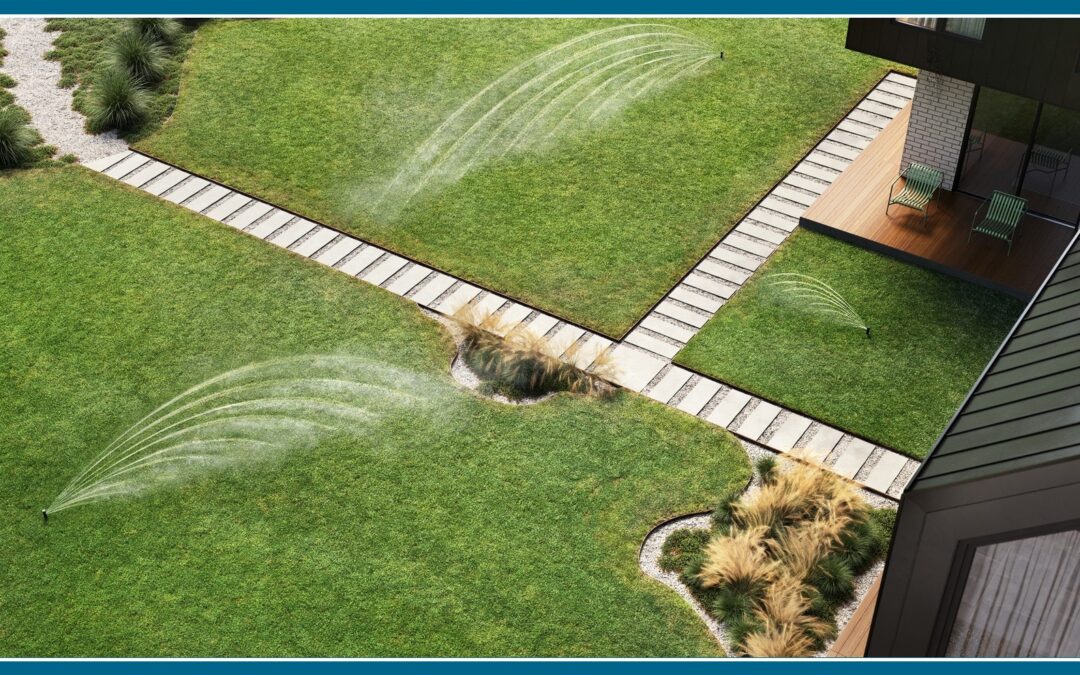Unique Irrigation System
“Prints” Water With Precision
More than ten years ago, Irrigreen CTO Gary Klinefelter first imagined applying commercial printing technologies to irrigation system design.
Noting that inkjet printers spray just the right amount of ink in carefully controlled patterns, he wondered why irrigation systems couldn’t do the same. As it turns out, they can.
What Is Irrigreen?
Irrigreen is a digital sprinkler system, a type of robotic sprinkler that uses printing technology to create water patterns that conform to the specific outline of any lawn. Water streams do not overlap. As a result, Irrigreen uses about half the water of conventional irrigation systems.
This unique system “prints” and executes a precise watering plan, placing water where and when needed – never on driveways or sidewalks. The system also includes a smart controller to measure weather patterns and adjust the irrigation schedule to further reduce water waste.
Check it out:
Last year Irrigreen introduced XP, the third iteration of its product, now including functionality that predicts and adapts to water pressure and flow changes. The company was founded in 2013 by Klinefelter and CEO Shane Dyer and currently holds 35 patents on its product. According to Dyer, most installations are residential, but commercial and municipal projects are on the horizon.
How It Works
Irrigreen employs one centrally placed sprinkler head for each six-to-eight heads needed for a traditional system. Each Irrigreen head has 14 nozzles to spray water at different distances. By rotating 360 degrees, each head covers about 2,000 square feet. So instead of using 40 or more sprinkler heads for the average residential property, Irrigreen needs only five heads to cover the same area.

Want to Know More?
Click the links below for online tutorials regarding Irrigreen installation, programming, and calibration:
The Irrigreen app allows homeowners and/or irrigation professionals to map out a watering pattern in any shape right from their mobile device. They can see a Google Earth view of the property and “place” digital sprinkler heads in the yard to see how many they need for full coverage. The app can also recall the last three years of rainfall and temperature data to determine how much water Irrigreen will save compared to a conventional mechanical system.
According to Scott Knowles, president of Wolf Creek Company, an Irrigreen distributor, the robotic sprinkler system “brings lawn irrigation forward into the digital age. It’s a good option for contractors who want to get out ahead of the competition by adopting advanced technology.”
Educating the Market
So far, lack of awareness has been the company’s biggest challenge. “People don’t know there is a better way to water their lawns,” Dyer said. So, to educate the market, Irrigreen developed an online tool that helps prospective customers assess the costs and benefits of installing the new technology.
“[With the online tool] we can show how much water they will save with the Irrigreen system and how much a system for their yard will cost,” Dyer explained.
Benefits to Pros
Because it uses only five sprinkler heads, the Irrigreen system streamlines installation. It also uses 80% less trenching and PVC piping – and the valves are located inside the sprinkler head — making installation about three times faster than a mechanical irrigation system.
About 80% of the company’s current business is retrofits. Most of the time, the old sprinkler heads can be capped off instead of removed, and existing piping is reused.
What the Critics Say
The Irrigreen system is not without its critics, however. Christopher Null, a technology expert and product reviewer for the online platform TechHive, voiced his concerns in January of this year. While providing an overall positive review (he found mapping the yard with the mobile app to be easy and “kind of fun”), Null stated that Irrigreen is still “a little rough around the edges.”
For instance, Null claims that the Irrigreen system must be installed from scratch and cannot be retrofitted to an existing irrigation system. Since Dyer asserts that most of the company’s current business is retrofits, perhaps Null means that retrofits require an irrigation professional and are not suitable for a DIY project.
Null said the weather-based controller was “a bit confused” during his testing. (It failed to skip the watering during a freak hailstorm and cold snap.) Also, Null thought the manual controller was disconcertingly unsophisticated, “a bare circuit board mounted inside a plastic box” with three poorly labeled buttons. “Hang on to the (very beta) manual if you ever plan to open the box.”
The online quote tool indicated that Null’s 6,100-square-foot yard required five sprinkler heads totaling $3,280. However, he was confident that his yard would need at least eight heads – still considerably less than the 20 mechanical heads in his existing system.
Null concluded that Irrigreen is promising but still “has some growing to do.”
Most of the comments on Reddit indicate that the company’s technology is excellent, but its customer service is abysmal.
You Be the Judge
Is Irrigreen the wave of the future, or does it still have some hurdles to overcome? As an irrigation professional, you be the judge.
Sources:
Featured Image: Irrigreen
SG Voice
Forbes
Minneapolis Business Journal
PR Newswire
TechHive






